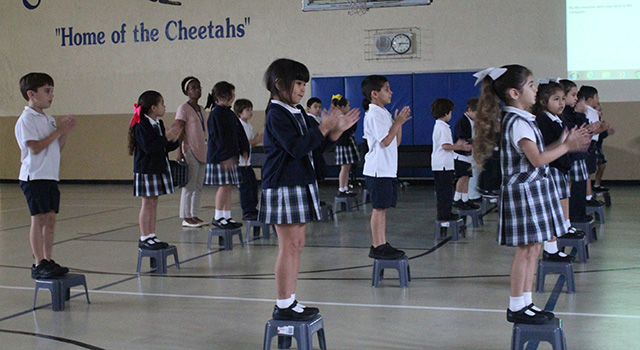By Cristina Cabrera Jarro -
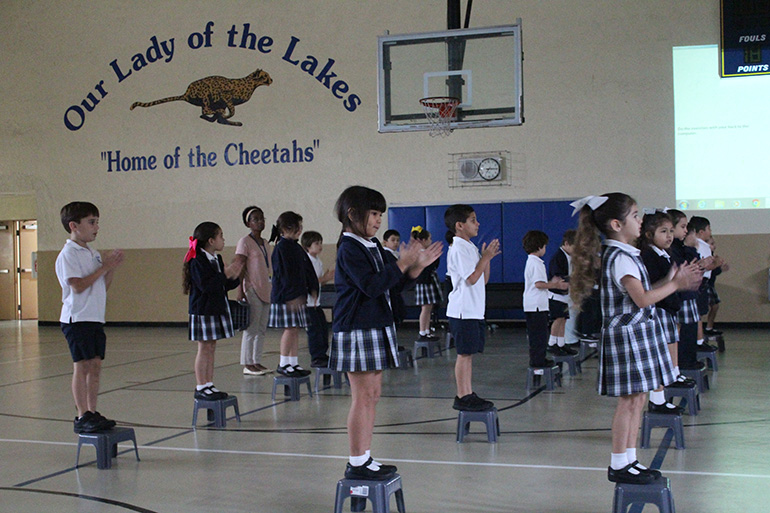
Photographer: CRISTINA CABRERA JARRO| FC
Our Lady of the Lakes School kindergarten students clap along while balancing on step stools during their NeuroNet Learning morning exercises.
MIAMI LAKES| A child’s brain is influenced by its surroundings. That’s why parents and educators teach ABCs, 123s and other early essentials using rhythm, song, and movement.
“This is why we have patty cake, jumping jacks, and all other forms of games and stories to count and sing,” said Alina Falcon, a PreK4 teacher and director of early childhood at Our Lady of the Lakes School in Miami Lakes.

Taking it a step further, Our Lady of the Lakes and St. Rose of Lima in Miami Shores are now participating in NeuroNet Learning, a program aimed at helping students develop essential reading, math and handwriting skills while incorporating a little bit of balance and exercise.
At Our Lady of the Lakes, it takes less than half an hour every morning of the school day.
“The whole purpose of it is brain development and processing,” said Aeleen Garrido-Tortorici, a licensed mental health counselor who works as guidance counselor at Our Lady of the Lakes. “If you look at studies it shows that if students do it early in the morning, it preps them for the rest of the day to take in the rest of the information they will receive.”
NeuroNet Learning was developed by Nancy Rowe, an audiologist whose work centers around helping children improve their motor and cognitive skills in an educational environment.
Garrido-Tortorici, who has a background in sensory integration and brain processing, suggested NeuroNet to Our Lady of the Lakes Principal Ricardo Briz last year. At a conference, he saw the program first-hand and was astonished as to how it managed to tie in neuro development, brain processing, and academics through exercises.
“The impact that exercise has on the brain prepares the brain for learning,” said Briz. “For me, NeuroNet is a new territory in education.”
At St. Rose of Lima School, the NeuroNet Learning program has been used for a few years. Principal Stephen Brown, who has 19 years of experience as a principal and just started his first year at St. Rose, said this is the first time he sees any program like it.
“I think it has great benefits for the children to just be able to teach them about movement and motion and coordination,” Brown said. “The little ones need a lot of work when it comes to hand-eye coordination for their brain development. It supports a lot of aspects that aren’t covered with standard curriculum.”
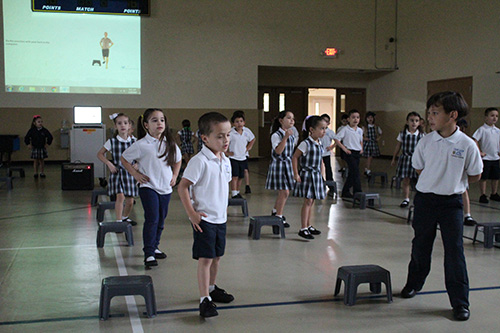
Photographer: CRISTINA CABRERA JARRO| FC
Kindergarteners from Our Lady of the Lakes School step forwards and backwards during the NeuroNet Learning morning exercises.
This year, St. Rose of Lima is monitoring the data and growth process of each participant, hoping for solid results and improvements for every child.
“There are some things that NeuroNet really hones in on to make sure that they master certain coordination abilities,” Brown said. “That’s what we really like about that program. There are different loopholes that it captures and focuses on and builds upon that you don’t necessarily get otherwise in the classroom.”
While NeuroNet costs up to $5,000 a year, Garrido-Tortorici negotiated for a better price. Wells Fargo and a family from Our Lady of the Lakes also donated funds to help the school afford the program.
It was introduced to PreK4 students during the 2016-17 school year. This year, the program continues for the new class of PreK 4 students, while the original participants, now in Kindergarten, engage in it at a higher level. The program continues until second grade.
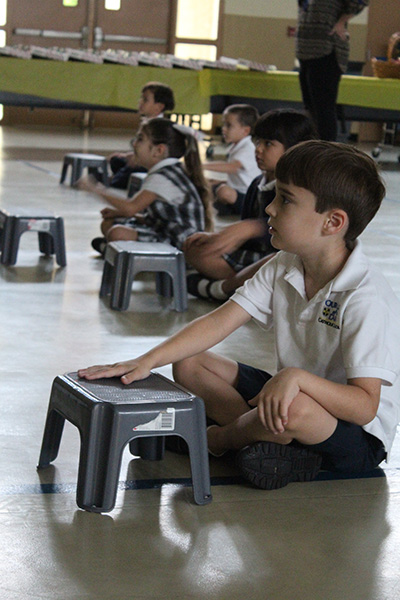
Photographer: CRISTINA CABRERA JARRO| FC
Students tap along to the beat during NeuroNet Learning morning exercises.
Programs like NeuroNet exist, but the others are computer based, and one-on-one. NeuroNet Learning is the first of its kind that the entire classroom can engage in simultaneously. Yet it retains individualized student testing that monitors progress and can identify problem areas.
This is how NeuroNet works: Each student has a stepping stool that he or she uses to do the exercises — to sit, stand, lean over or tap on. A video coach guides the class through each of the exercises. The students must count out loud, clap, hop, or stretch. Another level, geared towards writing and learning letters, numbers and shapes, has the students stand on their stools, left hand on hip and right hand outstretched, creating letters, numbers, and shapes in the air.
“At this age, kids are physical in everything that they do with their bodies, and this helps them concentrate and at the same time focus what they are learning, tying it all in to their bodies. It is musical and rhythmic and helps puts them in sync,” said Falcon.
“The key to stimulation is you have to find the right center because sometimes we overstimulate kids and that’s when we get them all jittery, or sometimes we don’t stimulate them enough,” said Garrido-Tortorici. “The key is finding somewhere right in the center, and then they’re ready to learn.”
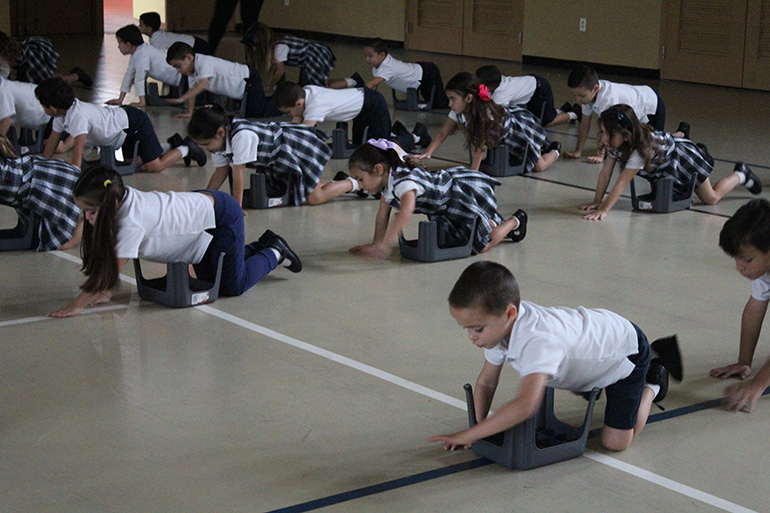
Photographer: CRISTINA CABRERA JARRO| FC
Kindergarten students stretch and tap during NeuroNet Learning morning exercises.
